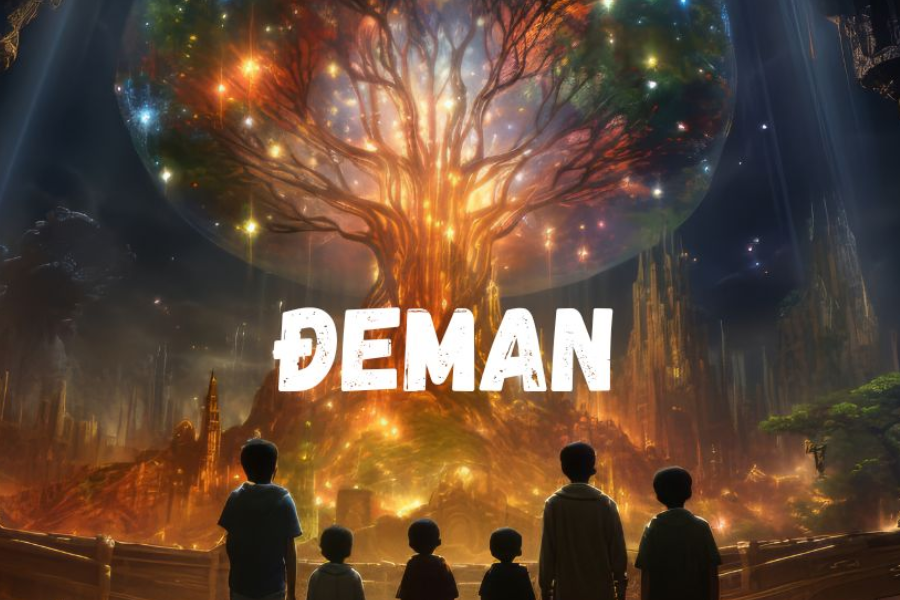Đeman: A Celebration of Community and Tradition
Đeman is a traditional festival celebrated in Southeast Asia, particularly in Vietnam, that honors ancestral spirits and celebrates the harvest season through rituals, music, dance, and community feasts.
At the heart of Đeman is the celebration of life’s cyclical nature, a characteristic that is embodied in seasonal festivals. It involves performing sacred rituals, offering food to spirits, and sharing meals with family and friends. As part of traditional Vietnamese culture, Đeman also has a deep spiritual connection to ancestor worship and local customs, which play an essential role in preserving the community’s cultural identity.
The Origins of Đeman
Historical Background of Đeman
Đeman, like many seasonal agricultural festivals in Southeast Asia, has its origins deeply rooted in ancient cultures. The festival’s history is intertwined with the agricultural practices of early Vietnamese communities. Traditionally, it marked the end of the harvest season, a time when people came together to celebrate the fruits of their labor, give thanks for the abundant crops, and offer prayers to spirits for continued prosperity.
The rituals surrounding Đeman have evolved over time. Initially centered around ancestor worship and seasonal agricultural cycles, Đeman later incorporated elements of Buddhism and other spiritual practices. As the centuries passed, it expanded to include a variety of cultural expressions, from folk music and dances to elaborate feasts and sacred ceremonies.
The Role of Seasonal Festivals in Ancient Cultures
Seasonal festivals like Đeman have always played a crucial role in ancient cultures. They provided opportunities to mark important agricultural events, such as the harvest or the start of the planting season. These festivals were an essential part of community life, serving as both a religious observance and a time for socialization and recreation.
In Southeast Asia, where rice farming is deeply embedded in the culture, festivals like Đeman were vital for ensuring a successful harvest. Communities believed that by honoring the spirits of the land and their ancestors, they could ensure bountiful crops in the coming year. These seasonal festivals also served as times of thanksgiving, reflection, and renewal, reinforcing the connection between humans, nature, and the divine.
Evolution of Đeman Through the Ages
As Vietnam and other Southeast Asian nations experienced social, cultural, and religious transformations, so too did the festival of Đeman. While it began as a primarily agricultural celebration, it evolved to incorporate influences from Buddhism, local customs, and even modern-day practices.
Today, Đeman blends ancient customs with contemporary expressions. For example, the traditional folk music and dances that were once performed using handmade instruments have been infused with modern genres and instruments, attracting younger generations who may not be familiar with older forms of art. Similarly, the rituals and prayers that once centered on ancestor worship are now often accompanied by prayers to deities and spirits of the land, reflecting a blend of cultural beliefs.
Key Traditions and Rituals of Đeman
Rituals and Ceremonies Associated with Đeman
Rituals are the heartbeat of Đeman. From the early morning prayers to the evening dances, each part of the festival serves to strengthen the spiritual and cultural fabric of the community. One of the key rituals involves offering food and incense to ancestors, a practice deeply rooted in Vietnamese family traditions. This gesture is meant to show respect and gratitude, seeking blessings for prosperity in the coming year.
Another essential ceremony in Đeman is the lighting of candles and incense at local temples or shrines. Families gather to honor the spirits of their ancestors and ask for their protection and guidance. These ceremonies are often accompanied by traditional Vietnamese folk songs and dances, which add a festive atmosphere to the deeply spiritual occasion.
Traditional Music and Dance
Traditional music and dance are at the core of Đeman. Folk songs and instrumental music, often played with traditional Vietnamese instruments like the đàn tranh (zither) and đàn bầu (monochord), create an enchanting atmosphere during the festival. These musical forms are not only artistic expressions but are also steeped in cultural symbolism.
The dances performed during Đeman are equally important. Folk dances such as the “Múa Lân” (Lion Dance) and “Múa Bài Bông” (Lotus Dance) symbolize good fortune and the purity of the community’s spirit. These dances, passed down through generations, allow participants to connect with their cultural roots while offering joy and entertainment to the community.
Symbolism Behind Đeman Rituals
Every ritual and ceremony in Đeman holds symbolic significance. For example, the act of offering food to ancestors is a reminder of the cyclical nature of life and death. It reinforces the concept of respect for the past while also acknowledging the importance of the present moment. Additionally, the use of fire in rituals, particularly the lighting of candles and incense, symbolizes the connection between the earthly realm and the spiritual world.
Even the choice of foods used in the offerings carries symbolic meaning. Traditional dishes like bánh chưng (square sticky rice cake) and bánh dày (round sticky rice cake) represent the harmony of yin and yang, signifying balance in life and the community. Through these rituals, Đeman becomes not just a celebration of the harvest, but a profound act of spiritual reflection and cultural preservation.
Đeman Around the World
Regional Variations of Đeman Celebrations
Although Đeman has its origins in Vietnam, the festival has spread across Southeast Asia, with regional variations that reflect local customs and practices. In some areas, the festival may focus more heavily on religious ceremonies, while in others, it might emphasize music, dance, or culinary traditions. Despite these differences, the core values of Đeman—community, heritage, and spirituality—remain unchanged.
For instance, in regions with larger Buddhist communities, Đeman may incorporate Buddhist teachings and practices, blending local traditions with the teachings of Buddhism. In other areas, the focus may remain more on honoring ancestors and celebrating the harvest.
Cultural Identity and Community Unity Through Đeman
Strengthening Bonds Across Generations
One of the most beautiful aspects of Đeman is its role in strengthening bonds between generations. Elder family members pass down the traditions, stories, and rituals to the younger generation, ensuring the continuity of cultural practices. Through the shared experience of celebrating Đeman, children and grandchildren learn about their heritage and the values that define their community.
This multigenerational bonding is crucial in preserving cultural identity. As younger generations become more involved in the festival, they not only contribute to its ongoing celebration but also help to keep the traditions alive for future generations.
Conclusion
Đeman is more than just a festival; it is a celebration of life, community, and cultural heritage. It serves as a bridge between the past and present, ensuring that traditions are passed down through generations. In an age where globalization threatens cultural uniqueness, Đeman stands as a testament to the importance of preserving one’s identity and honoring the customs that define a people. As families and communities come together to celebrate, they reinforce the values of unity, gratitude, and spiritual connection that make Đeman a truly remarkable tradition.






